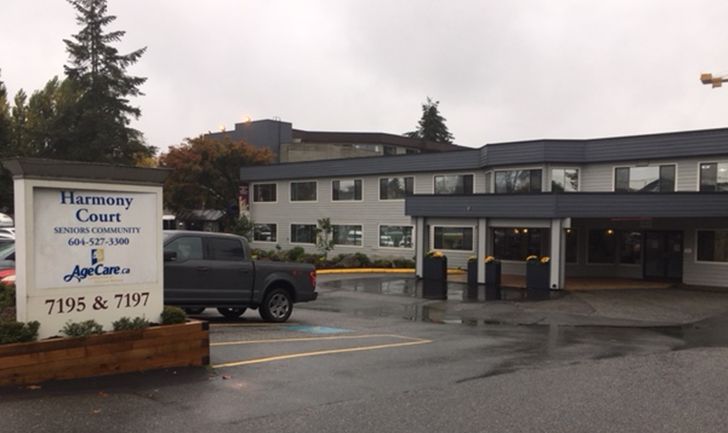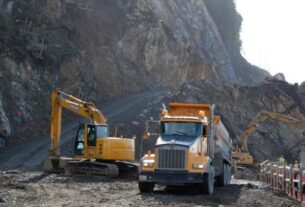In early March 2020, BC’s first confirmed COVID-19 cases and deaths occurred in a long-term care facility. Most of the early deaths were in care homes but, after a slow start, BC’s government acted to restrict staff to only working in one facility, to stop spreading of the virus, and boosted their pay to a living wage. This resulted in the province generally doing better than Ontario and Québec in care home outbreaks and deaths during the pandemic’s first wave. In Eastern Ontario and in Laval, two of the hardest hit areas of Canada, death rates were much higher in private care homes.
BC’s care facilities again came under fire in October 2020, when care home death tolls started to rise, and the province stopped disclosing individual case and death counts at long-term care facilities. This was quickly followed by a rash of devastating outbreaks in a series of care homes. The worst outbreak in late November saw 99 of 114 residents testing positive at Little Mountain Place care home in Vancouver – 41 residents died, and 70 staff tested positive. In early January, the province changed course and started sharing data again. Currently, residents in long-term care facilities, assisted-living and independent-living homes make up nearly two-thirds of COVID-19 deaths in the province.
While it has become accepted that COVID-19 disproportionately kills the elderly and the immune-compromised, how are BC’s care homes faring nearly a year and a second wave into the pandemic?
Profit Kills
Private, for-profit, care homes consistently have the highest infection rates among care homes. According to an exclusive CBC News analysis about BC infections:
“For-profit facilities saw the largest share of overall outbreaks, as well as a disproportionate share of the worst outbreaks, where more than 40 percent of residents were infected. Of the 21 outbreaks where more than 40 percent of residents were infected between the beginning of March and end of January, 11 were in private for-profit facilities, six were in non-profit run facilities and four were in care homes run by government health authorities.”
“Of the 22 outbreaks where more than 10 per cent of residents with COVID-19 died, half were in private for-profit facilities.”
These statistics are significant given that BC’s roughly 27,000 long-term care beds are more or less evenly distributed between private for-profit, private non-profit, and facilities run by government health authorities. Outbreaks, irrespective of severity, are disproportionately in private for-profit facilities. Of the 214 outbreaks in BC’s residential facilities for seniors, 103 or 48 percent were in for-profit ones, 79 (37 percent) were in not-for-profits, and only 32 (15 percent), were in health authority facilities.
The CBC does not draw any conclusions about this correlation but notes that “private for-profit homes in BC have previously been shown to pay less to employees, and spend less on residents’ care.”
Private Care Homes in a Pandemic
An Ernst & Young consulting firm report commissioned by the provincial government sheds more light on BC’s first wave COVID-19 response. The report perfectly captures the onset of the pandemic: half heroic problem-solving and half blunder.
A key point the report raises is that better pay and conditions in the public sector had big benefits during COVID: “Due to pre-existing disparity in the attractiveness of employers, primarily driven by salary and benefit structures, staff chose to work for Health Authority owned and operated facilities, leaving contracted facilities short staffed and more reliant on overtime.” Therefore, private facilities had greater struggles in managing staff availability, providing infection prevention and control education and training, compared to health authority operated facilities.
Communication problems between health authorities and private care providers led to delayed and inconsistent COVID-19 safety protocol implementation in private care homes. At the same time, the government did not have access to private care homes’ staffing, cleaning and PPE data, which it needed to make additional funding decisions to support their facilities. The report also points out that the privately operated facilities had greater challenges in procuring PPE – sometimes buying substandard PPE from private sellers – until a central distribution system was set up.
Frank Rizzardo, president of the for-profit Florentine Seniors Residence in Merritt, says that the provincial order restricting care home workers to one facility, which had significant health benefits, made it harder for private care home operators to staff their facilities. Not surprisingly, workers opted to work for their local health authorities given better compensation and job flexibility.
Defending private care homes, Former BC Health Minister Terry Lake, now CEO of the BC Care Providers Association, says that high community spread of COVID-19 in the Fraser Health region may also be a factor as there are higher numbers of private facilities in the region.
Public and non-profit versus private
While public and private non-profit care homes have different funding systems, neither seeks to squeeze a profit out of providing care for some of the most vulnerable people in our society. Meanwhile, private for-profit facilities seek to amass profits from “caring” for people. This basic difference results in major differences in living and working conditions.
A February 2020 report from BC’s Office of the Senior Advocate (OSA) found that long-term care homes operating on a not-for-profit basis spent about $10,000, or 24 percent more per resident, on care than those in the for-profit sector. Prior to the pandemic, non-profit care homes provided more hours of care than they were funded for (80,000 hours), while the for-profit sector failed to deliver 207,000 hours of funded care. Further, the for-profit sector generated 12 times the amount of profit or surplus generated by the not-for-profit sector ($34.4 million versus $2.8 million). The OSA concluded that the most significant issue raised by this review is the disproportionately lower spending on direct care compensation in the for-profit sector versus the not-for-profit sector.
Not only were resident conditions better in non-profit homes, but “wages paid to care aide staff in the for-profit sector could be as much as 28 percent below the industry standard.” A human resource data base maintained by the Health Employers Association of British Columbia shows that both the retention, and successful recruitment of new care aides, is higher with employers who fully participate in the wage and benefit scales of the master collective agreement. BC’s Seniors Advocate Isobel Mackenzie concedes that health authority run facilities may have better access to PPE and infection control experts. She asks, “how do we plan for the future and plan for a level of expertise to be available across the board?” This is a secondary issue compared to the lack of care for residents of care homes.
Bring all long-term care into public ownership and control
The Ernst & Young report draws on interviews with staff from all types of facilities and suggests that health authority owned and operated facilities offer better oversight, management and support. Private sites manage independently unless an outbreak occurs, and then they need public health help.
It is not only in BC that private “care” homes are killers – the same pattern emerged in Ontario, where monitoring of care homes was slashed by the Ford government with deadly results. A recent study by the Canadian Medical Association found significantly worse outcomes in for-profit and non-profit homes than in publicly run homes – outbreaks were far more likely in both for-profit and non-profit facilities and the death rate was nearly double that of the public sector.
Some might conclude from the Ernst & Young report that the government needs to make supports more accessible to private sector care homes. Yet, what is the job of a care home?
The job of a care home is in its name: to provide care and a home. The data shows that public sector care homes are simply better at getting this job done. If the private sector is falling short of fulfilling the function of a care home, then the private sector and its profit motive has no place in taking care of vulnerable people in our society. Private sector care homes should not exist. They are not able to provide quality care and well-paid, flexible employment on the basis of their private ownership. The only real benefactors are the owners making a profit off of peoples’ lives (and deaths) and livelihoods. Why should the government further assist these individuals in enriching themselves off of others’ lives? There is no reason not to bring all long-term care into public ownership and control.
Socialist Alternative Canada says:
- Ensure adequate funding of hospitals and long-term care so that people are treated with dignity and their health needs met.
- Fight Privatization – no two-tiered health service.
- End private, for-profit care homes; bring all long-term care into public ownership and control, with compensation to those in need, not to enrich the owners.
- Immediately raise the wages of all care home workers to union rates of pay.
- Implement immediately a minimum of four hours of daily care per resident in long-term care homes.
- Support the struggle for decent, unionized, well-paying jobs in hospitals and care homes, including guaranteed steady hours in only one institution.
- For a socialist society, one that can provide dignified care and treatment for the elderly.



